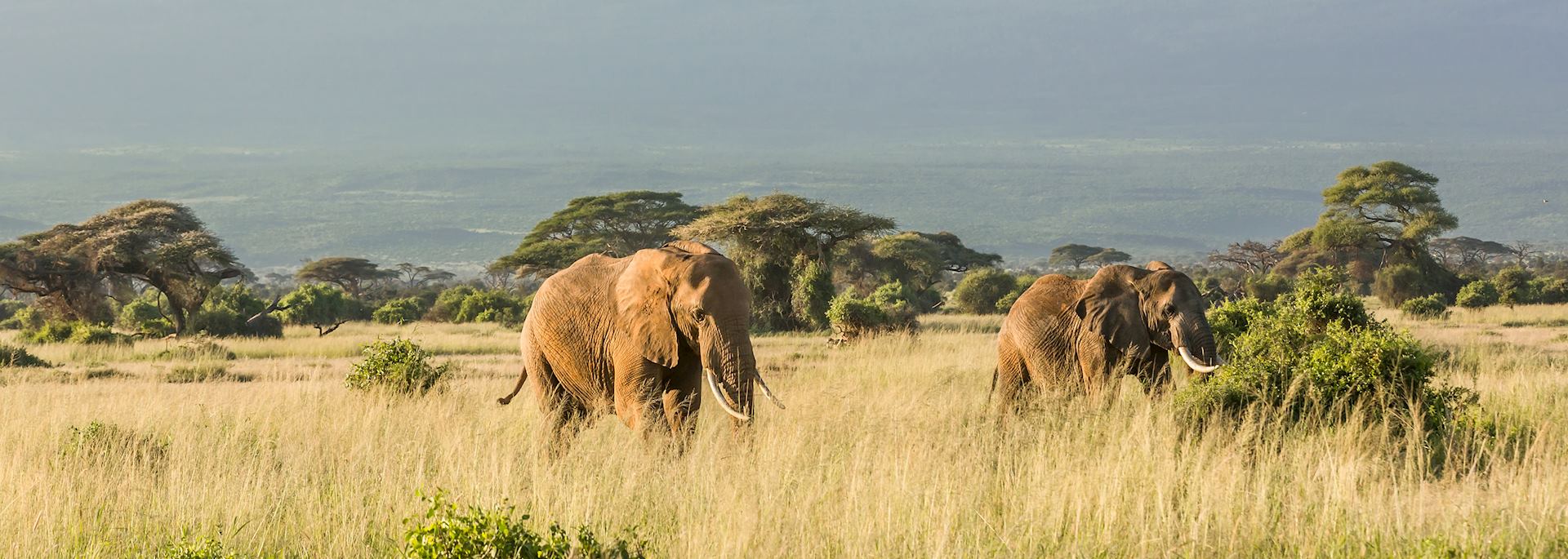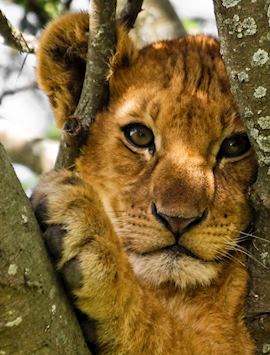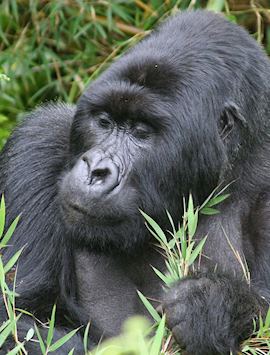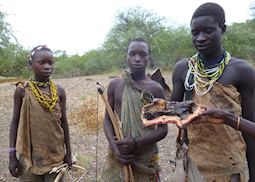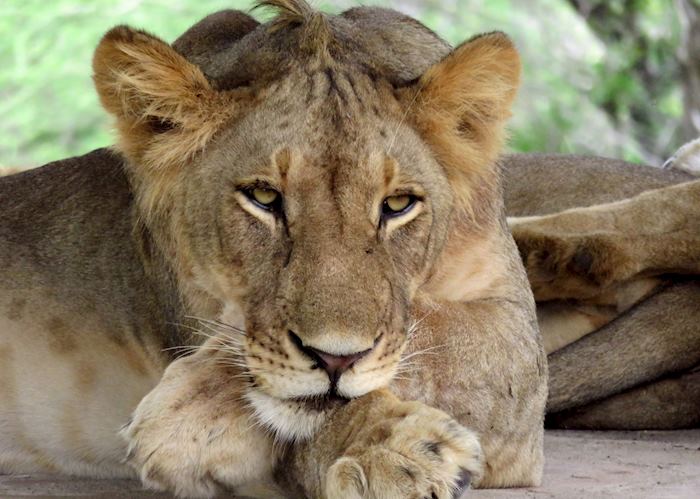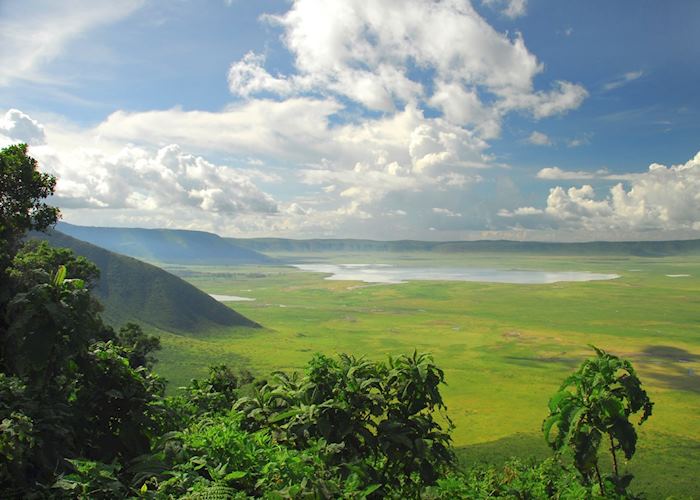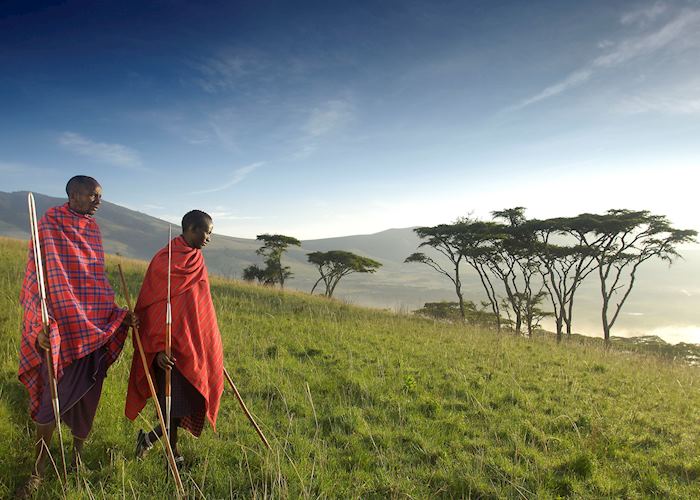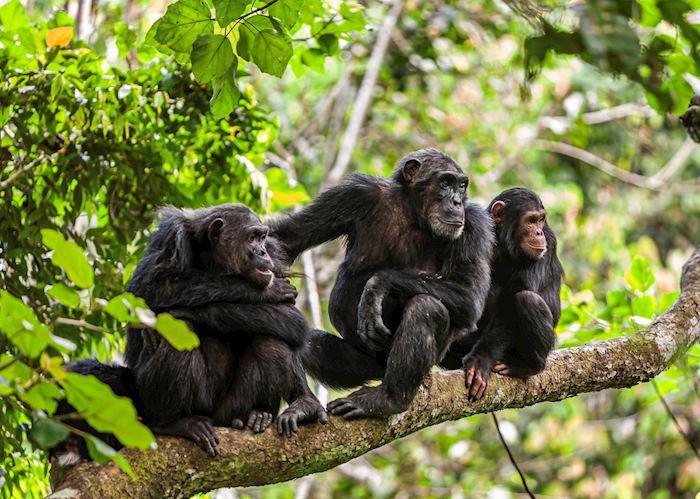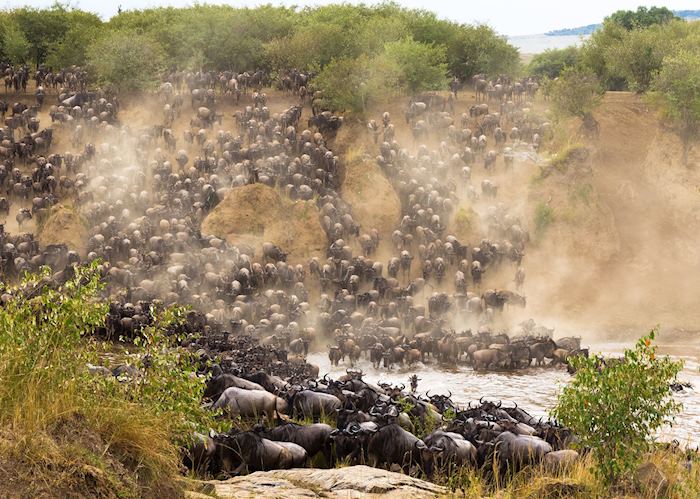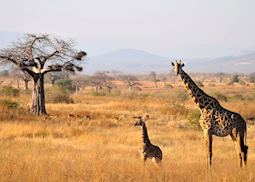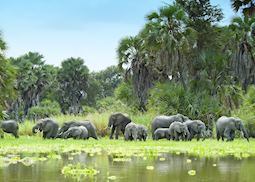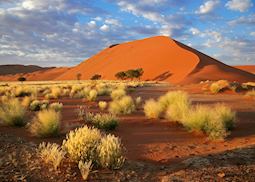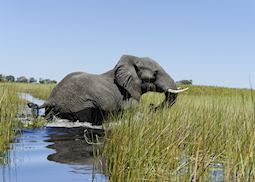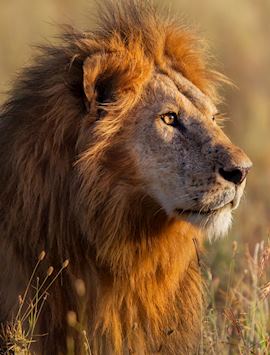
Witnessing the Great Migration in the Serengeti, summiting Mount Kilimanjaro, relaxing on Zanzibar’s soft-sand beaches… On a tailor-made holiday to Tanzania with Audley, you’ll see the highlights — and much more — your way. We’ll design your ideal holiday with you, paying close attention to your interests, your travel style and your budget. Our Tanzania safari specialists know the country inside out and can lead you to experiences you won’t find in a guidebook.
Watching herds of wildebeest frantically cross the Mara River, dodging the snapping jaws of crocodiles. Listening to bird calls on walking safaris through remote areas of the Serengeti. Tracking the Big Five on game drives in the Ngorongoro Crater. Spotting hippo, sable antelope and rainbow-plumed birds on boat safaris in Nyerere National Park. Trekking for chimpanzee troops in the forests of Mahale Mountains National Park.
The elephant-dotted plains of Tarangire National Park. The sandy shores and sparkling water of Lake Tanganyika. Roaring lion prides prowling Ruaha National Park… What excites you? Travel at your own pace, in your own style, with the confidence that we’ll show you the best options, wherever you go.
Suggested tours for Tanzania
Conquer the climb to Mount Kilimanjaro's summit, or search of the elusive Big Five in the Nyerere National Park. We'll use our first-hand expert knowledge to shape your trip around your travel style, interests, and budget. We can also combine your Tanzania tour with some time to relax on the sandy beaches of Zanzibar.
Suggested activities for Tanzania
Watch the magical break of dawn in the Serengeti with an unforgettable balloon safari or take a walk with the Hadzabe Tribe to learn about their way of life. We’ve delved deep on our travels to find the most authentic experiences that are designed to enhance your trip to Tanzania.
-
Walking with the hunter-gatherer Hadzabe people ![Honey found by the Hadzabe tribesmen on a hunt, Lake Eyasi, Tanzania]()
Walking with the hunter-gatherer Hadzabe people
Lake EyasiWalking with the hunter-gatherer Hadzabe people
Trekking with this tribe is one of the most fascinating experiences you can do anywhere in East Africa. Walks vary between 5-8 km (3-5 miles) and at times they walk fairly quickly.
View details -
Serengeti balloon safari ![Serengeti hot-air balloon safari]()
Serengeti balloon safari
Serengeti National ParkSerengeti balloon safari
This is one of the most popular ways to see the wildlife of the Serengeti. The flight will last for around an hour before you land to celebrate with champagne before a full English breakfast prepared and served in style in the middle of the bush.
View details -
Walking safari in Ruaha National Park ![Lilac-breasted Roller, Ruaha National Park, Tanzania]()
Walking safari in Ruaha National Park
Ruaha National ParkWalking safari in Ruaha National Park
The emphasis on your safari with your host and guide, Moli, is on the walking safaris which really unveil the magic of Ruaha National Park. You can also incorporate bushcraft into a walk.
View details
More choice for your safari
- Inspiration across all our African destinations
- Trip suggestions based on your interests
- Advice on where to safari, when
- Meet our team of safari experts
Best time to visit
Our specialists advise on the best months to visit Tanzania, including information about climate, events and festivals.
Request our brochure
Covering all seven continents, The World Your Way shows you how you can see the world with us. It features trip ideas from our specialists alongside hand-picked stays and experiences, and introduces our approach to creating meaningful travel experiences.
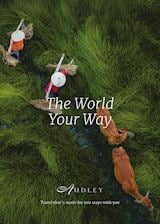
Useful information for planning your holiday in Tanzania
The official languages of Tanzania are Kiswahili and English. More than 100 different languages are spoken across the country, but almost everybody at popular visitor destinations will be able to speak some English.
The currency of Tanzania is the Tanzania shilling (TSh or TZS). Most banks in major cities have ATMs, but they aren’t always reliable. Credit cards are accepted at some major hotels, but a surcharge will usually be added. We recommend that you don't rely on credit cards other than as a backup.
Hotels, and some restaurants and shops in popular visitor areas will also accept payment in US dollars, but due to a spate of forgeries, nobody in Tanzania, including banks, will accept US$100 notes, so it’s best to carry smaller denominations.
In Tanzania you should try kichumbari (tomato, cucumber, and bell pepper salad), mchicha (green vegetable stew), and chapati (thick naan-like bread). In Zanzibar you’ll find dishes based on seafood cooked in coconut milk, while milky Zanzibar spiced tea is popular to drink. The food on the coast is heavily influenced by Indian and Arabic cuisine, but in camps, hotels, and lodges you’ll find more international dishes.
For the latest travel advice for Tanzania, including entry requirements, health information, and the safety and security situation, please refer to the Foreign, Commonwealth & Development Office website.
In Tanzania you could track the Big Five or see the Great Migration, summit Mount Kilimanjaro, relax on white-sand beaches, and snorkel on coral reefs teeming with tropical fish.
An incredibly diverse destination, Tanzania’s wildlife is a major draw and for many visitors, the highlight is witnessing the Great Migration of two million wildebeest, zebra, and gazelles across the Serengeti. For others, it’s tracking the Big Five in the Ngorongoro Crater, taking a hot air balloon flight over herds of elephant or giraffe, or tracking chimpanzees. Or you may want to slow down on a boating safari in Nyerere National Park or a walking safari in Ruaha National Park and get closer to smaller species.
Alternatively, you could take on the challenge of hiking up Mount Kilimanjaro on a multi-day trek, see turtles off the coast, visit traditional villages, or simply laze on powder-soft sands and swim in turquoise seas.
In Tanzania you can stay in rustic safari camps, luxurious lodges, on private islands, and in ocean-front resorts with extensive facilities. While on safari, you’ll have the choice of opting for simple tented camps where you’ll wake to the sound of wildlife at a nearby watering hole, or stylishly intimate lodges hidden deep in the forest.
Elsewhere, you could stay at a luxurious coastal resort with lots of activities, choose private villas, simple cottages, or even an underwater room. If it’s local history and character you’re after, you can stay in a former sultan’s palace in Zanzibar’s Stone Town. For some ideas, browse our collection of places to stay in Tanzania.
You could visit Serengeti National Park, Ngorongoro Crater, Mount Kilimanjaro, and Zanzibar on a trip to Tanzania, among many other wildlife areas. Most visitors choose to visit national parks that link together geographically to make the most of their time, and then follow the adventure of a safari with time relaxing on the white sands of Tanzania’s coast or islands.
Tanzania’s safari areas can be divided into the northern, southern, and western circuits. In the north are Serengeti National Park, the Ngorongoro Crater, and Tarangire and Lake Manyara national parks. In the south, you could visit Nyerere National Park and Ruaha National Park, while to the west Katavi and Mahale Mountains national parks combine well. If you’re up for a challenge, you could tag on a climb up Mount Kilimanjaro before unwinding on the palm-fringed beaches in Zanzibar.
A safari in Tanzania is a great way to see the Big Five — lion, elephant, buffalo, leopard, and the black rhino — but you’ll also see giraffe, zebra, and occasionally cheetah, among many other species. Two million wildebeest, zebra, and gazelle cross the Serengeti during the Great Migration and in their wake a slew of predators such as lion, leopard, cheetah, hyena, and crocodiles follow.
A boat safari in Nyerere National Park promises sightings of hippo, sable antelope, and vibrant birdlife, while hiking in Mahale Mountains National Park, brings the prospect of spotting chimpanzees sweeping through the trees.
It takes around 12 hours to fly from the UK to Tanzania.
The time zone in Tanzania is UTC+3 hours. Daylight Savings Time is not observed here.
The best way to get around Tanzania is by road or by air. You could travel around Tanzania with a private driver-guide learning about the country and its wildlife as you journey between destinations or combine road travel with some internal flights to see the diversity of Tanzania’s landscapes in a fast, efficient way.
The best time to see the Great Migration is from June to October when the herds are crossing back and forth between the northern Serengeti and the Masai Mara. It’s the best time of year to see dramatic river crossings but is also the busiest time of year. November to March, Tanzania’s ‘green season’ is far quieter, and from January you’ll see the herds grazing with newly born calves. The long rains between April and May make this the only time of year less suited to seeing the huge herds of wildlife on the move.
Use our travel tool to find up-to-date visa and passport requirements for Tanzania. Enter where you’re travelling to and from (including any stopover destinations en route or flight layovers), along with your intended travel dates and passport details, for a full list of requirements.
Your doctor can provide you with vaccine advice for Tanzania, but you should also ensure you’re up to date with the recommended vaccinations for your home country. You can also check the suggested vaccinations on the Travel Health Pro website.
If you’re coming from or transiting through a country affected by yellow fever, the government of Tanzania may request proof of vaccination against the disease. Check the list of countries at risk of yellow fever and speak to your doctor as vaccination is not advised for everyone.
There’s a high risk of malaria in all areas of Tanzania below 1,800 m (5,906 ft). There’s also a risk of malaria in Zanzibar. See your doctor to discuss which antimalarials will suit you best.
To lower your risk, avoid being bitten by mosquitoes by wearing long, loose clothing, wearing repellent, and using mosquito nets where provided.
Tanzania in pictures
Our expert guides to travelling in Tanzania
Written by our specialists from the viewpoint of their own travels, these guides will help you decide on the shape of your own trip to Tanzania. Aiming to inspire and inform, we share our recommendations for how to appreciate Tanzania at its best.
-
![My travels in Tanzania]()
My travels in Tanzania
In his footage taken on safari in Selous Game Reserve, our Tanzania specialist Mark highlights its wildlife and landscapes. Mark captures one of Africa’s great wildernesses, and the stomping ground for giraffe, lion, wild dog, water buffalo and elephant.
-
Family safaris in Tanzania ![The Ruaha National Park, Tanzania]()
Family safaris in Tanzania
Family safaris in Tanzania
Whether you’re looking for The Lion King experience on the Serengeti or a truly wild adventure in the south, Tanzania is a great place for a family safari. Specialist Philippa suggests some child-friendly camps and lodges and offers insider tips on planning.
Read this guide -
Tanzania safaris: north vs south ![Tree-climbing lions in Lake Manyara]()
Tanzania safaris: north vs south
Tanzania safaris: north vs south
From the drama of the Great Migration in the north to the hushed wildlife experiences of the south, Audley specialist Dickie uncovers the best safari destinations across Tanzania. Discover what you might see in each region and where’s best to stay.
Read this guide -
Honeymoons in Tanzania ![Elephants in Tarangire National Park]()
Honeymoons in Tanzania
Honeymoons in Tanzania
Tanzania offers a variety of private, secluded experiences, which make it a stand-out honeymoon destination. Country specialist, Georgia, explains how you can combine time on safari with relaxation on a palm fringed beach in Zanzibar.
Read this guide -
What to do in Tanzania: our highlights guide ![A herd of elephant in the Selous]()
What to do in Tanzania: our highlights guide
What to do in Tanzania: our highlights guide
The Great Migration of wildebeest and zebra through the Serengeti is not the only highlight of Tanzania. We have come up with five of our favourites, from climbing Kilimanjaro to relaxing on the beautiful island of Zanzibar.
Read this guide
Other popular destinations
Still looking for ideas? If Tanzania has captured your interest, we think you might also like these destinations.
